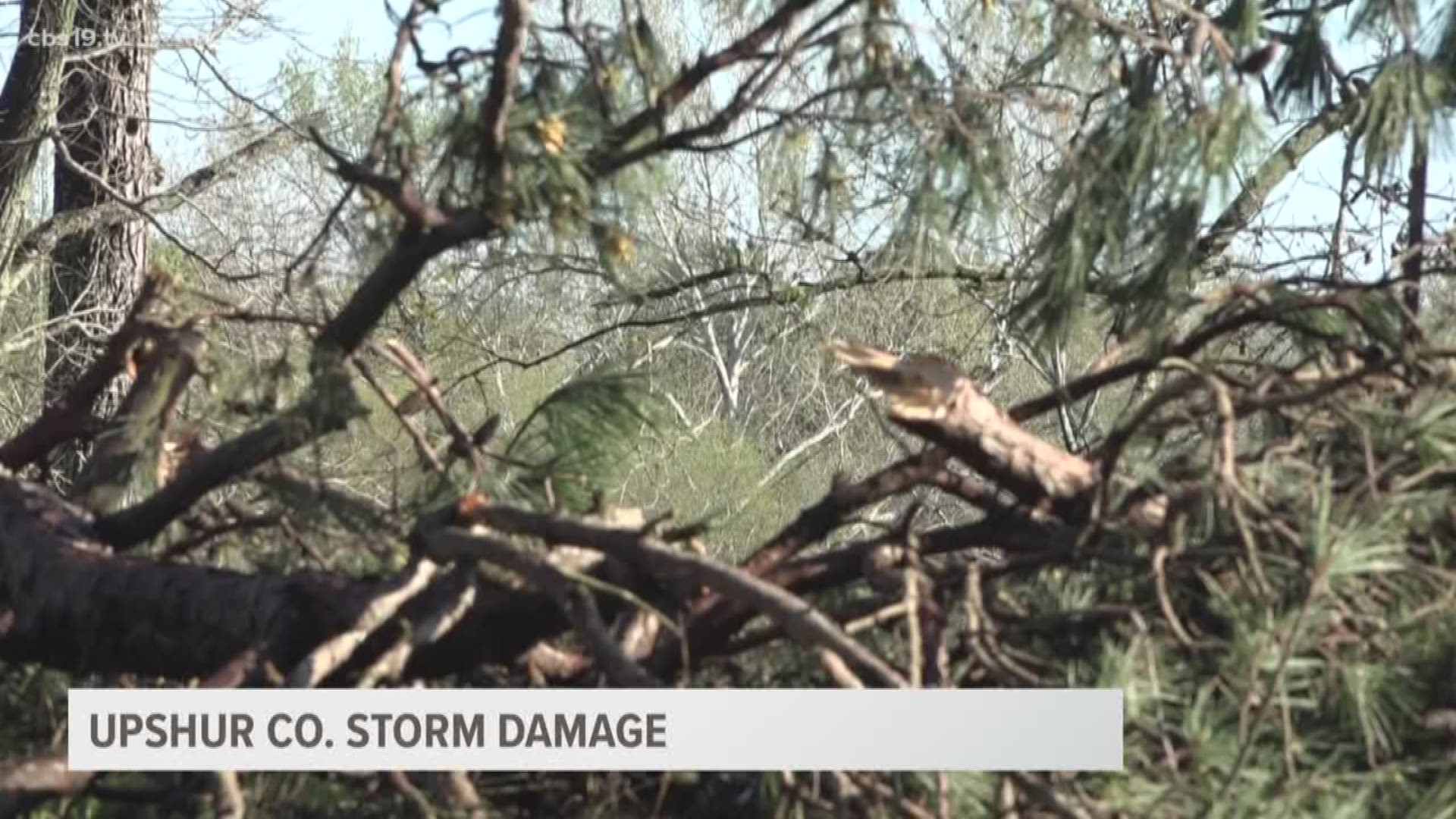GILMER, Texas —
After storms pushed through East Texas early Monday morning, many residents in Upshur County woke up without power.
The outage affected more than 1,000 residents.
The National Weather Service sent a team to Gilmer to determine if the storms produced a tornado. According to the NWS, there was not a tornado; however, straight-line winds exceeded 100 miles per hour in the area.
While the Upshur Rural Electric Cooperative says almost everyone who is on their roster should now have electricity, residents are still dealing with the damage.
“Lines twisted, that tree down, it come in like a lion and left like a lamb. It hit then it was gone,” Don Cannon Sr., a resident of Gilmer, said.
There were uprooted trees, debris and structures without their roofs in the city. However, the most concerning damage were the downed power lines outside Gilmer.
In all, there were six power lines reported down outside Gilmer, most of those due to falling trees.
Those at URECC worked tireless to ensure they not only removed the hazard, but replaced poles.
“The thing that slows us down is replacing those poles,” URECC spokesman Tony McCullough said. “An average pole replacement may take three hours and if you have to come in with a swamp buggy to a flooded area or very muddy area, it’ll take a little bit longer to do that."
WHY ARE STRAIGHT-LINE WINDS OFTEN MISTAKEN FOR TORNADOES?
- Both can have very damaging winds causing significant or extensive damage in some cases
Tornado winds range from 40 to more than 300 MPH. Straight-line winds can exceed 165 MPH.
- A loud "roaring" sound
Wind speeds of 75+ MPH will often sound very loud - leading some to believe they heard a tornado when if fact they only heard straight-line winds.
- Trees were "twisted" off - so it must have been a tornado
This is one of the most common mistakes - the fact trees were "twisted" off doesn't necessarily mean a tornado has gone through.
If you could draw a line straight down a tree, you'd see the tree isn't exactly alike from one side to the other. Differences in limbs and leaves may cause the tree to have more wind resistance on one side than the other.
The tree begins to "twist" (much like a stop sign "twists" in strong winds).
If wind speeds are high enough, the tree will begin to tear apart in a twisting motion - even though the winds are relatively straight.

